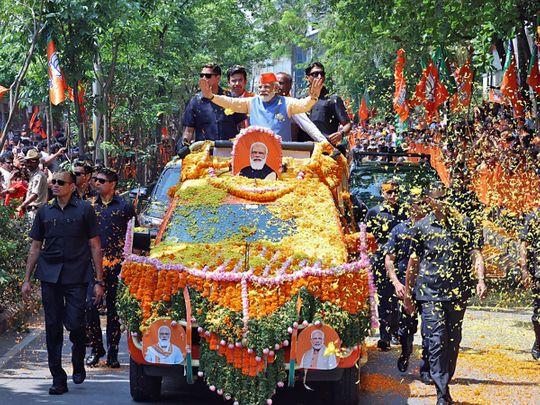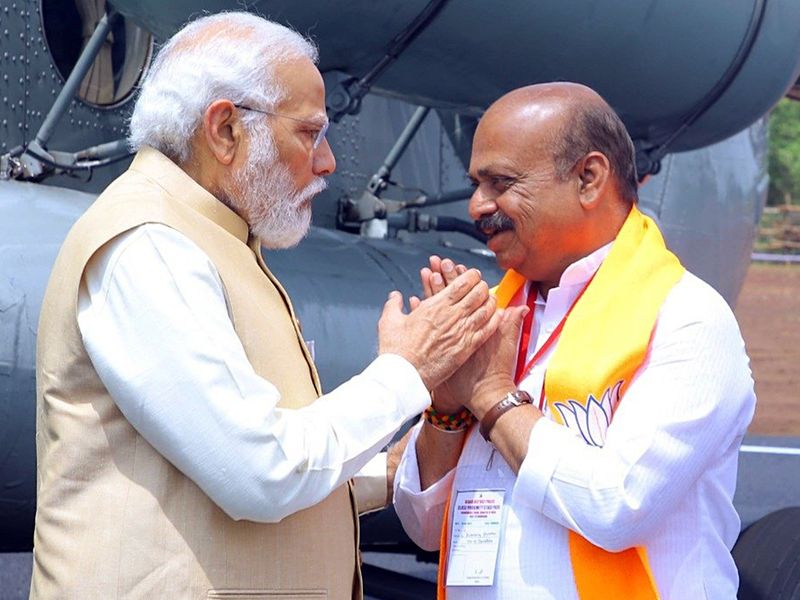
The Bhartiya Janata Party’s (BJP) campaign in the Karnataka assembly elections was so poor it beggars belief.
Eedina, a Kannada news website, did a survey of over 41,000 voters, and found that only 12 of them could name a single welfare scheme of the Basavaraj Bommai government. This most interesting survey finding alone tells you why the BJP not only lost but lost badly. Incidentally, the Eedina survey was able to predict the election results spot-on many days in advance.
The BJP’s poor campaign in Karnataka is surprising because the BJP of Narendra Modi and Amit Shah is usually very good at campaigning and image makeovers.
The absence of any good welfare schemes — or at least their publicity — by the Bommai government was one of many reasons why the BJP campaign did not seem to have a coherent pitch. It was unable to tell people why they should vote for the BJP, except for the tired old cliches of ‘double engine government’.
They didn’t have much to show by way of achievement, nor did they have any convincing promises about the future. The campaign slogan was ‘Trust in BJP’. Whatever happened to the BJP’s magical dream-selling?
An election is about the future, about electing the government for the next five years. It is like a fixed deposit in a bank. You choose the bank that promises the best interest rate but you also need to be able to trust the bank will deliver it. The Bommai government’s poor performance failed to win that trust, and the election campaign failed to promise the best returns on investment.
The absence of a welfare pitch
The lack of a strong welfare-centric narrative was particularly strange given how good the Modi government is at doing that at the centre. Even in the Uttar Pradesh assembly election in 2022, for example, there was the concrete, tangible, coherent factor of free ration with which swing voters could find reason to trust the BJP with welfarism.
The ‘K-shaped recovery’ in a post-pandemic economy has made the rich richer and the poor poorer. Small-vehicle sales are down, big cars are selling more. The India of 2023 demands a renewed welfare push. The Bommai government refused to make one. Even the election-year interim budget was so indifferent to today’s economic realities that it didn’t feel like an election-year budget.
The poor today are suffering from the twin problems of unemployment and inflation. The BJP didn’t seem to think it important to address these issues. The Congress exploited this opportunity by promising cash incentives to various demographics, making the Congress campaign look more positive than the BJP’s. This is borne out in the results: the Congress has gained more in rural than urban, more in north and central Karnataka than in the south.

Icing without cake
Throwing state money on caste and religious institutions, tinkering with reservations to impress dominant castes — these things can be icing on the cake. The BJP forgot to bake the cake.
The BJP seemed to be overconfident about winning the election because they had a popular prime minister to campaign for them, a superior party organisation to go door to door, a local and national media favourable to them, and of course Hindutva.
They thought the party organisation would overcome the welfare weaknesses and the Modi factor would make up for the lack of a popular local face.
Not countering the negatives
They didn’t even think it necessary, for example, to address the negative image the BJP government was beset with. For example, it was a year ago when the narrative of “40% corrupt government” began with the suicide of a contractor.
Since the BJP didn’t feel it important to address the corruption narrative, the Congress’ efforts to make corruption an issue in the election went unchallenged.
The BJP says their vote share is unchanged and the Congress has won at the expense of the Janata Dal (Secular). This is not true. A region-wise analysis of the vote shares by Ashish Ranjan for India Today shows the BJP lost vote share in 4 out of Karnataka’s six regions, including the Hindutva-dominated belt of coastal Karnataka.
Yet, the state-wide vote share looks unchanged because the BJP increased its vote share in the Bengaluru region as well as in the JD(S)-dominated Old Mysuru region. Ironically, the BJP’s aggressive foray into Old Mysuru only helped the Congress.
In some seats the BJP seems to have split the JD(S) vote but it also made the election look more bi-polar, BJP versus Congress, reducing the salience of the JD(S) even on its own home turf.
Even the BJP’s Hindutva pitch seemed rather confused. A year ago it seemed so loud that it appeared to be central to their political strategy. Ironically, it may have pushed the JD(S)’ Muslim voters to choose Congress in order to decisively keep the BJP out.
It also came in the way of giving due public attention to welfare schemes and development initiatives. As the BJP struggled to balance between Hindutva, caste and development, they appeared to be neither here nor there.
How the best can fail
Finally, the BJP made mistake after mistake over the leadership issue. Not only did they replace a respected Lingayat leader with a lightweight, they didn’t think it necessary to build his image and make him a popular leader.
As if this was not bad enough, they did a near-surgery of important Lingayat leaders in the ticket distribution, alienating their own core base.
The Karnataka debacle was a repeat of the mistakes the BJP made in Himachal Pradesh, only worse. The Congress owes its victory as much to getting its own campaign right as to the BJP getting it wrong.
The BJP’s confidence about the popularity of Narendra Modi seeing them through did not work out that way. By the time Modi’s carpet-bombing rallies began, it was already too late. Social media videos suggested bigger crowds in Congress rallies than in Modi-Shah ones.
Karnataka is an example of how even the best can make mistakes, overconfidence being the worst of all mistakes.









